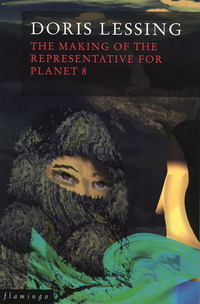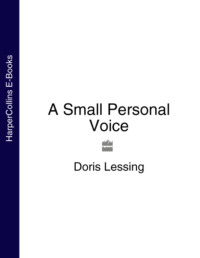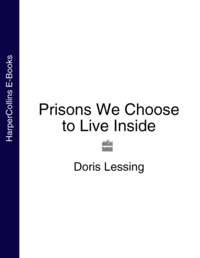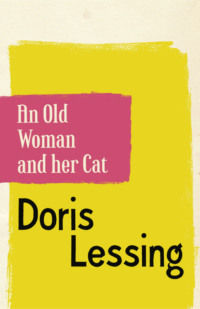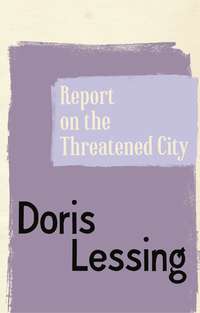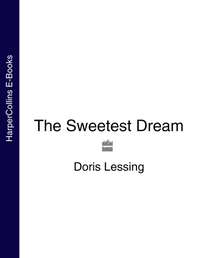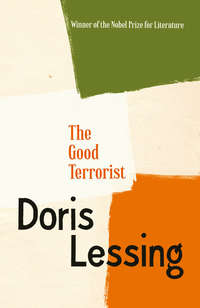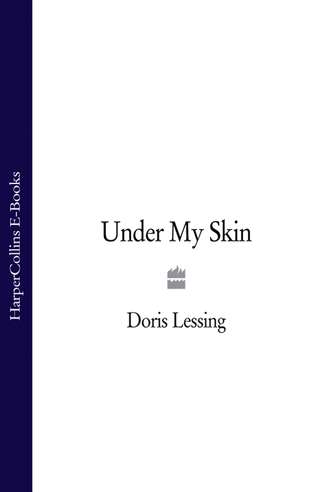
Полная версия
Under My Skin
My parents did not understand the Whiteheads, found them shifty and unsatisfactory, though soon they would become familiar with people who farmed, went broke, mined, succeeded, part-succeeded or went broke, farmed again, owned mine-stores – did anything that came to hand. Inside this same hand-to-mouth, hit-and-run pattern some people made fortunes. Others died of drink. The Whiteheads were not in any sense educated. They knew nothing but this settlers’ life. My mother disliked them, and they must have found her more than a trial. As for my father, he was doing the books for the mine, and would for a couple of years after he was on his own. Already we were worried about money. There was an unpleasantness about the books. Mr Whitehead was either careless or dishonest, and he blamed my father. I have described this, humorously, in In Pursuit of the English, but for my parents it was the chief horror of ‘God, that was an awful time.’ There was nothing funny in the living of it.
My father rode over every day to supervise the beginning of the farm, for already there was a ‘bossboy’, Old Smoke, from Nyasaland, who had brought his relatives with him, and a good part of each morning was spent in long, meditative consultations between the two men, who usually sat at either end of a fallen log, watching the labourers at work. Both men smoked, my father his pipe, and Old Smoke dagga, or pot. That was why he was called Old Smoke. My mother usually walked over for at least part of the day, and took us with her, so we could watch the cutting of the trees, the stumping of the lands, the new cattle in their kraals, the digging of the wells. Two wells were dug, according to the findings of the water diviners – everyone used diviners then for wells and, later, for boreholes. Above all, we watched the building of the house. The grass for the thatch of the house was still green in the vleis, but the pole and mud walls of the house could go up, and they did. This process I described in Going Home, the making of a house from what grew in the bush, and no house could ever have for me the intimate charm of that one. In London you live in houses where other people have lived, and others again will live there when you have moved or died. A house put together from the plants and earth of the bush is rather like a coat or dress, soon to be discarded, for it probably will have returned to the bush, from fire, insects, or heavy rains, long before you die. The minute the grass was ready, the roof went on, for the priority was to get away from the Whiteheads.
My parents had chosen a site which the neighbours all warned would give them trouble, on top of a hill, which meant dragging everything up and down the steep slopes by oxen. It was the beauty of the place, that was why my father chose it, and then my mother approved it. From the front of the house you looked north to the Ayreshire Hills, over minor ridges, vleis and two rivers, the Muneni and the Mukwadzi. To the east, a wide sweep of land ended with the Umvukves, or the Great Dyke, where crystalline blues, pinks, purples, mauves, changed with the light all day. The sun went down over the long low ranges of the Huniyani Mountains. In the rainy season it was extravagantly, lushly beautiful, mostly virgin bush, but even where it had been cut for mine furnaces the bush had grown up fresh and new. Everywhere among the trees the soil was broken by ridges and reefs of quartz, for this was a gold district, and on every reef of protruding rock you could see the marks of a prospector’s hammer that had exposed a crust of fool’s gold – pyrites – or the little glitter of mica.
Weeks before the house was finished, when it was still a skeleton of poles stuck in the ground, then poles covered with a skin of mud, then a roughly thatched house, with holes that would be windows, my parents were sitting on petrol boxes in front of it (where soon they would be in deck chairs), and they watched the mountains, or the sunset, or cloud shadows, or rain marching around and across the landscape. I sat on my father’s good leg and watched too.
When the house was done, perched on the top of the hill, the bush was cleared not more than thirty yards in front, and on either side. At the back where the garage and store huts were, trees had been cut for a hundred yards or so. The real bush, the living, working, animal-and-bird-full bush, remained for twenty years, not much affected by us in our house, and right until my parents left it in the middle of the Second World War, you might startle a duiker or a wild cat or a porcupine only a few yards down from the cleared space. Two rough tracks led down from the house to the fields in front, and a steep path through thick trees and bush to the well. Down the hill in front of the house was a big mawonga tree, its pale trunk scarred by lightning, an old tree full of bees and honey. What impresses me now is not how much effect our occupancy had on the landscape of the farm, but how little. Below the hill on one side was the big field, the hundred acres, and there were smaller fields here and there. Cattle kraals, tobacco barns – and the house on the hill. The farm labourers’ village on a lower hill merged into the bush, as our house did.
5
THE HOUSE ON THE HILL was not different from most first houses built by settlers who, when they arrived in the colony, were nearly always poor. Usually they were brick and corrugated-iron shacks, one room, or two. The most attractive houses of those early days were like the Africans’. An African family had a group of huts, each hut for a different purpose, and early settler houses were often half a dozen thatched huts, or brick or pole-and-mud, sometimes joined together by pergolas covered with golden shower or bougainvillea. The floors were of brick or red cement, more often of stamped dung and mud. The African huts had no windows, but the white huts always did, sometimes French windows, gauzed in, so it seemed like an aviary. The floors had on them reed mats or animal skins. The first beds could be strips of ox hide on poles. The furniture stores were miles away in Salisbury, and wagons brought the furniture out; even when they were brought by train, the tables and chairs would have to be trekked from the station to farms over bad roads. Farm sales, as farmers went bankrupt, which they so often did, recycled furniture among the farms. Furniture was often improvised from bush timber by any black man who showed he had an eye for it, and sometimes from petrol or paraffin boxes. In those days petrol and paraffin came in four-gallon tins, two in a box. A settee could be made from them. Sideboards, writing tables, dressing tables, were made with two or four boxes on their ends, with a board across, and boxes set horizontally on them. These exercises in spare living were civilized by curtains made from flour sacks. The flour came to the farms in thick white sacks which, when washed, went soft and silky and took dye well. Or curtains were of embroidered hessian.
If you were really hard-up, all that had to be bought was a Carron Dover wood-burning stove. Every farmhouse had one – or nearly every farmhouse: a just-arrived young settler might live for a season in a mud hut, and his kitchen was an open fire under a corrugated-iron roof.
The houses outgrew themselves, were demolished, to be replaced by the solid brick, ceilinged houses that announced success, or remained as the core of a spreading farmhouse, full of rooms.
The talent for invention, for improvisation, was never lost. Even in a house owned by ‘a cheque book farmer’ (I heard the old envious phrase in 1988 about a black farmer, by one who did not yet have a cheque book), there might be hessian curtains or hangings embroidered red and orange and black with wools, or appliquéd in the geometric patterns fashionable at the time because of ‘the jazz age’. Or the white flour sack curtains, dyed. I have seen a farmhouse full of antiques – real ones from England and Scotland – with bedrooms where at the windows hung glazed chintz, the beds valanced in chintz, but with a fire screen of embroidered hessian, and bookcases filling whole walls made of painted petrol boxes.
Our house was different from these first houses only in its shape, built long, sliced across for rooms. A photograph of Mother Patrick’s and her nurses’ hospital in the early 1890s – the Dominican nuns were the first women in the Colony – is almost identical with that of our house, before it sprouted verandahs and porches and then another room joined to the house by a pergola. Inside it was better furnished than most: for instance, the living room where the dining table, made from bush timber, was set so we could look over to the hills as we ate. The pale grey mud of the walls had been left unwhitewashed, because it looked so nice with the Liberty curtains. The chairs, a settee, bookcases had been bought from a farm sale. The writing table was of stained petrol boxes, and John William McVeagh and his second wife, the daughter of the dissenting minister, looked through mosquito gauze at the verandah and the rows of petrol and paraffin tins painted green that held pelargoniums. The next room, my parents’, had proper beds and mattresses, the curtains were Liberty’s, the rugs were from Persia, the copper washbasin and jug stood on a petrol box washstand. Next door, at first my brother’s and my room, then mine, there were reed mats on the floor, the bedspreads were of flour sacks dyed orange, the washstand and dressing table of petrol boxes, painted black. The little room at the very end had reed mats, and a petrol box wash table and dressing table. It was in this room that Biddy O’Halloran lived for a year. She embroidered the white flour sack curtains all over in glowing silks that were still fresh twenty years later.
Nor was there anything remarkable about the oil lamps that had to be refilled every morning, for those early farms did not have electricity. Nor the water cart under its shed of thatch, with its two casks side by side whose taps were never allowed to drip, for even a cup of water was costed in terms of the energy of the oxen who three or four times a week pulled the heavy barrels up the hill. Nor the lavatory, twenty yards down the hill, a packing case with a hole in it over a twenty-foot hole, standing in its little hut, with a thatch screen in front of the open door. And not the food safe, either, double walls of chicken wire filled with charcoal where water trickled slowly from containers on the top, dripping all day and all night, the food kept cool because the safe was set to catch any wind that blew. When a farmhouse took a step forward into electricity, running water, or an indoor lavatory, neighbours were invited over to inspect the triumph, which was felt to represent and fulfil all of us.
My mother must have realized almost at once that nothing was going to happen as she had expected.
Not long ago I was sent the unpublished memoirs of a young English woman, with small children, who found herself in the bush of old Rhodesia, without a house, for it was still to be built, no fields ready – nothing. And particularly no money. She too had to make do and contrive, face snakes and wild animals and bush fires, learn to cook bread in antheaps or cakes in petrol tins over open fires. She hated every second, feared and loathed the black people, could not cope with anything at all. Reading this, I had to compare her with my mother, who would be incapable of placing a vegetable garden where a rising river might flood it, who never ran from a snake or got hysterics over a bad storm. Another manuscript, this time from Kenya, was the same: wails of misery and self-pity, and what seemed like an almost deliberate incompetence in everything. The two memoirs reminded me of what was worst for my mother. Hard to believe that the first thought in the minds of the two memoir writers, with everything they were being tested by wildness and hardship, was this: were they still middle-class people, ‘nice people’? But so it was. Similarly, my mother was unhappy because her immediate neighbours were not from the English middle class. How was it that my father, who, after all, must have at least noticed her preferences, chose a district where all the ‘nice people’ were miles away, on the other side of the District? Is it conceivable he really never understood how important it was to her? Or, perhaps, finding the land was all he had strength for, and then he had to make a farm from nothing, and start a kind of farming he had not imagined. He had always wanted to be a farmer, but in his mind were the patterns of English farming he had seen all around him as a boy.
Both of them believed, and for years, that a change of luck would bring them success. She might not have seen at once that her crippled husband would not be able to dominate the bush, and that they would never make the fortunes promised by the Exhibition, but she did see that the life of dinner parties, musical evenings, tea parties, picnics was gone. That meant she felt checked in a deep part of her. Going to Persia she had taken all the necessities for a middle-class life. Coming to Africa, she had clothes for making calls and for ‘entertaining’, visiting cards, gloves, scarves, hats and feather fans. Her evening dresses were much more elegant than anything likely to be worn even to Government House then. She probably thought that was where she would be invited. She might have defied her father to be that common thing, a nurse, but she never had any intention of giving up the family’s status as middle-class. Her children would fulfil her ambitions and do even better. So in that first year, when she took a good look at her circumstances and her neighbours, she only postponed her ambitions. The farm would shortly be successful, and then she could go home to England, put her children into good schools, and real life would begin.
Meanwhile, she could not have made more efficient, ingenious, energetic use of what she found around her in the bush, on the farm.
And now I come to the difficulty of reconciling child time and adult time. There was a stage of my life – I was already in England, and trying hard to make sense of my life through a strict use of memory – when I understood that a whole tract of time had disappeared. There was a gulf, a black hole. Years and years of it – so it seemed. And yet the record of outward events is clear. In January 1925, the family was in Lilfordia. Between January and June 1927, I was at Mrs Scott’s. Yet I had already been at school for a whole term at Rumbavu Park. All these hazy, interminable memories had to be fitted into one year and nine months. Impossible. I simply gave up. But later had to come back, and back … and was forced to concede that between my stamping around in the mud and water that would make the plaster of our house, and my going to school, was – less than two years. And even now I feel incredulous, it can’t be so. But it was so. Between January 1925 and September 1926, the following things happened.
All of us, the whole family, had malaria twice, badly. The new lands of the farm were stumped, the farm furnished with its necessities, the house built, and we moved into it. Biddy O’Halloran left, good riddance on both sides. My mother had a breakdown and was in bed for months. Mrs Mitchell and her cruel twelve-year-old son came and then left. I learned to read and triumphantly entered the world of information through print on cigarette packets, grocery packaging, the big words on top of newspapers, the Army—Navy catalogue, words written under pictures … and then, books themselves. My brother and I did lessons from the correspondence courses organized for farmers’ children by the government.
That was the pattern of events, and it has little to do with what I remember, the chronicle in child time.
Biddy O’Halloran is leaning on my father’s shooting stick, and we are in the big field, below the hill, grasshoppers and butterflies everywhere. She has had her appendix out, and she is telling my little brother that if he doesn’t keep his mouth shut a grasshopper will jump down into his appendix and claw its way out through his stomach. He is crying with terror. ‘Of course it’s not true,’ cries my mother later, at bedtime, while my brother sobs. But years later my brother told me he had an irrational fear of grasshoppers; I was able to tell him why. ‘Do you mean to say that’s all it was?’ he demanded, trying to laugh, but shocked that what had so influenced him and for so long had been so insignificant.
Biddy O’Halloran had fair skin, and in the ‘vee’ of her cotton dress it was flushed a gentle red. A child’s close stare revealed it was a mottle of scarlet and cream. Two small children gravely discuss how red jelly and cream got under Biddy’s skin. ‘It was poured into a hole and then it spread.’ We made excuses to get close, were rebuked for staring, came away to tell each other there wasn’t a hole. So she must have spread the jelly on, and it got through the skin. ‘Mummy, how did the red jelly and cream get under Biddy’s skin?’ ‘What red jelly? What nonsense!’ The mystery was discussed gravely, scientifically, as we sat together under the eaves of the thatch, the cats and dogs in attendance. ‘But perhaps it isn’t jelly, it’s blood from the roast beef!’ ‘But what are the white bits then?’
Or long, thoughtful stares at an adult’s fingernails, where there is a pale blob in the pink of a nail. ‘Mummy, why didn’t God finish your nail?’ ‘What do you mean, finish?’ Look, there is a hole.’ ‘What hole? That isn’t a hole!’ The hairs on an adult’s forearm, each golden stalk in its little pit of brown skin. The smells. Biddy had a sour smell, sharp and hurtful to the nose, when she splashed on cologne. My mother’s smell was vigorous and salty. My father’s male and stale and smoky.
We watched from the edge of the bush my mother showing Biddy how to put bloody rags into a petrol tin to soak, under the thatch of the house at the back. The look of dramatic secrecy on my mother’s face, her lowered dramatic voice. The deliberately languid, irritated movements of Biddy. We knew the ‘boys’ were not supposed to see the contents of this tin. We crept up to the tin when the women had gone and speculated: Biddy had cut her finger or her foot – that must be it. But why didn’t mummy want the boys to know? We were always cutting ourselves, or had bruises, and sometimes the ‘boys’ washed the blood off for us. Why then …?
The adult world, with its disorder, its lack of sense, its mysteries, two small children trying to get things into their right place, call them by their right names …
I lie on my bed, reading Walter de la Mare’s The Three Royal Monkeys. One of the monkey brothers eats an orange, which he thinks is conveniently divided into segments for pulling apart and eating. I cannot make sense of this. The orange segments I am eating as I read are too big for my mouth. Yet I am bigger than the little monkeys we see racing about in the trees just down the hill, and which sometimes come into the house and investigate the rafters before running back into the trees. Did the monkey in the book mean those tiny globules of orange juice, each in its little bag, which I burst on my tongue, flooding my palate with scent and taste? But surely that couldn’t be it: globules aren’t segments. I lie and wonder, read, and think … The Royal Monkeys must be much larger than the little bush babies we know. When they pull the orange skins apart their fur prevents them feeling the showers of sharp juice that come out. The spray lives in the pores of the orange skin. When a visitor comes who has rough-pored skin on her face and neck, I stare secretly at the pores where water is standing. If pulled apart, would that skin send out a spray of …? ‘What is that child staring at?’ ‘Doris, why are you staring? It’s rude.’ I turn away, run off, sit under a bush down the hill, pull a leaf off a bush, look at the veins on the leaf and the pores between them. I pull the leaf apart but there is no strong-smelling spray on my face and hands. On the bush is a chameleon. I watch it creep with its slow rocking motion up a branch. And then suddenly … I rush screaming up the hill to my mother, sitting in her chair, beside my father, looking out over the bush. ‘What on earth is the matter?’ ‘Mummy, Mummy …’ ‘But what is wrong?’ ‘The chameleon,’ I weep, hysterical, terrified, ‘The chameleon …’ ‘What chameleon?’ ‘It was sick and all its insides came out.’ I run back down the hill. Behind me come my mother and my little brother. The chameleon is sitting quietly a little further up the branch, its eyes swivelling about.
I am in shock, it is like a dream. I saw the chameleon’s insides come out and … it happens again, and I scream. ‘Shhh …’ says my mother, holding me tight. ‘It’s all right. It is catching flies, can’t you see?’ I am shuddering with disgust and fear – but with curiosity too. I stand safe inside her firm grasp. ‘Wait,’ she says. The club-like tongue of the chameleon darts out, a thick fleshy root, and disappears back inside the chameleon. ‘Do you see?’ says my mother. ‘It’s just its way of feeding itself.’ I collapse into sobs, and she carries me back up the hill. But I have acquired adult vision; when I see a chameleon, part of my knowledge of it will be that it darts out its enormous thick tongue, but I won’t really see it, not really, ever again, not as I saw it the first time.
In 1992 I was standing, a couple of weeks after the first rains, in Banket, near a mafuti tree, a big one. The mafuti is a serious tree, its fronded leaves dark green, its trunk thick and safe. There is nothing frivolous about this tree. But growing at its root was an excrescence, like a sea creature, coral sheaths where protruded the tender and brilliant claws of new leaves, and these were like green velvet. You would never think they had anything in common with the sober leaves above them. And suddenly I remembered how I rushed up to the house, screaming that a monster was attacking the tree, it was a beetle the size of a cat.
I wake in the night. All round me, above me, is a rustling, creeping noise. I start up on my elbow, peer up through the white of the mosquito net. My heart is beating, but the rustling is louder. The square of the window lightens, once, twice. Wait, is that a car coming up the hill, the headlights … ? No, my parents’ room is dark, they are in bed, too late for a car. It is as if the thatch is whispering. All at once, as I understand, my ears fill with the sound of the frogs and toads down in the vlei. It is raining. The sound is the dry thatch filling with water, swelling, and the frogs are exulting with the rain. Because I understand, everything falls into its proper place about me, the thatch of the roof soaking up its wet from the sky, the frogs sounding as loud as if they are down the hill, but they are a couple of miles off, the soft fall of the rain on the earth and the leaves, and the lightning, still far away. And then, confirming the order of the night, there is a sudden bang of thunder. I lie back, content, under the net, listening, and slowly sink back into a sleep full of the sounds of rain.
Or it is just after we have been put to bed, and from the end of the house come the sounds of grown-up voices, and my mother playing her piano. I and my little brother talk in low voices, knowing we should be asleep. I continue my mother’s bedtime stories, of the animals in the bush, the mice in the storeroom. Then I try to frighten him with the dragon from St George and the Dragon. I frighten myself. The dragon is spread all over the thatch, fills the sky, claws spread out, fire rushing from its mouth. I know perfectly well there is no dragon, yet I am frightened. Similarly, when I have convinced myself there are wicked fairies in the corners of the room, I know I have invented them. When at last I start yelling for my mother to come, and she does, she says, soothingly, that there is no dragon, no fairies behind the curtains, I feel impatient, because that is not the point. I need to be scolded for preventing my little brother from sleeping, for ‘making things up’. Similarly, by myself at the very bottom of the hill, just where the lands start, I stand by an old gnarled and knotted tree, like the ones in Peter Pan in Kensington Gardens, and imagine fairies so strongly I am not far off seeing them. When I populate the antheap with its curtains of Christmas fern and its spider lilies with fairies and goblins, what I create is an intense listening silence, and I know if I turn my head fast enough, when they don’t expect it, I’ll see them. Which does not mean I actually believe they are there. Just as I believe and do not believe in the tooth fairy. My disbelief in Father Christmas does not stop me from expecting reindeer and explaining to my brother they will come in through the window, since there is no chimney. Long earnest discussions in the hushed voices that go with the turned-low lamp and the shadows in the room, about reindeer and how fast they would have to fly from England to get here in time for Christmas, and if the reindeer would have to descend at intervals to feed, and what would they think of trees and grass, since what they like to eat is moss. When my brother tells my mother I believe reindeer will arrive for Christmas and they will eat musasa and mafuti leaves, it can be seen from her frown that she is working out how to balance reality and useful and necessary fantasy, and I at once hurriedly say that of course I don’t believe in Christmas reindeer.


